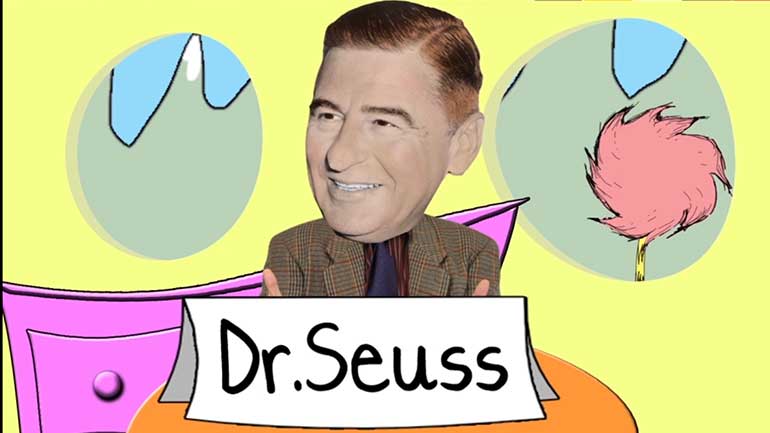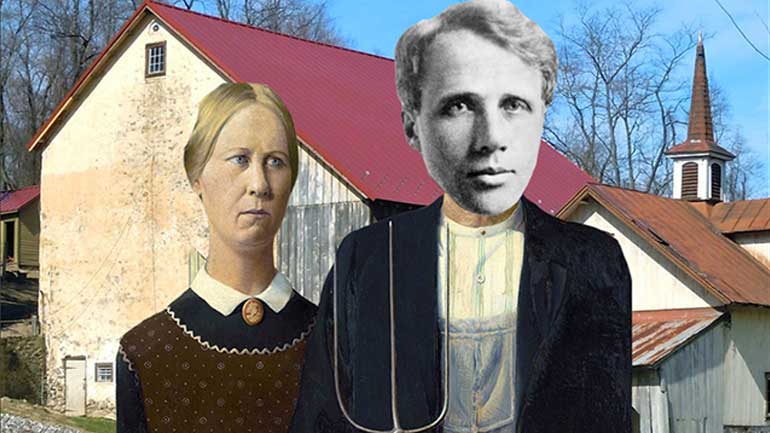ShmoopTube
Where Monty Python meets your 10th grade teacher.
Search Thousands of Shmoop Videos
Young Adult: Visual Communication 449 Views
Share It!
Description:
Not a believer in the power of visual communication? All right; go ahead and watch this video with your eyes closed. We'll let you know when it's over. In the meantime, try not to bump your knee on a table.
Transcript
- 00:04
Visual Communication, a la Shmoop. Who doesn’t like a book with pictures?
- 00:08
Come on, Tolstoy… where are the doodles? All right, so some works can stand on their
- 00:13
own without the aid of illustrations or graphics.
- 00:16
But when you do come across a book containing… pretty pictures… they aren’t necessarily
- 00:21
there just to distract the reader’s eyes for a few moments…
Full Transcript
- 00:24
…or to give them a break from reading all those tedious words.
- 00:28
Just as with language, visual communication can be used to convey ideas, evoke emotions,
- 00:33
or enhance a story.
- 00:35
You’ve heard that… a picture is worth a thousand words?
- 00:38
Well, it’s true. And if that can trim down a few pages in the long run, then there’s
- 00:44
a tree somewhere who feels exceedingly grateful. Images can be pretty powerful.
- 00:51
An author can go on for pages and pages describing the utter horror and desolation of Nazi Germany…
- 00:56
…but just one image can drive it all home. Or, better yet… a whole bookful of images.
- 01:01
Otherwise known as a graphic novel. They’re like comic books for adults.
- 01:06
Although, we’ve been in those stores, so let’s be honest.
- 01:09
Comic books are comic books for adults.
- 01:14
Graphic novels use illustrations to communicate same tough issues…
- 01:18
…like Maus by Art Spiegelman…
- 01:20
…and American Born Chinese by Gene Luen Yang.
- 01:24
Although even in graphic novels, words aren’t wholly absent.
- 01:27
They still pop up in the occasional dialogue bubble.
- 01:31
On a smaller scale, editorial cartoons have used images to make their points since the
- 01:35
days of Ben Franklin…
- 01:36
…who is credited with creating the very first political cartoon back in 1764.
- 01:44
It was a great day for him… until he tied the cartoon to a kite and was struck by lightning.
- 01:49
That guy and his electrical experiments… Ever been watching your favorite series…
- 01:54
…and next thing you know you’ve got a hankering for Taco Bell?
- 01:58
Advertisements… both in print and television media… use images to influence consumers
- 02:03
and convince them to…
- 02:04
…make a run for the border… or whatever. Doesn’t watching that mouth-watering taco
- 02:09
help you work up an appetite better than if they simply splashed the words…
- 02:14
TACOS ARE DELICIOUS, TRUST US… up there on the screen?
- 02:17
It may be true, but… we want to see that ground beef falling out of a flaky shell.
- 02:27
Look at Sherman Alexie’s The Absolutely True Diary of a Part-Time Indian as an example.
- 02:32
How do illustrations play a key role in communicating the narrative?
- 02:35
If you can come up with a brilliant answer, Shmoop just might hire you.
- 02:41
Part-Time, of course.
Up Next
Dr. Seuss was a failure to start, but he soon learned to follow his heart. He wrote books about things that he knew, and soon enough, his book sale...
Related Videos
Sure, Edgar Allan Poe was dark and moody and filled with teenage angst, but what else does he have in common with the Twilight series?
Emily Dickinson was a New England poet/hermit with a fascination with death and immortality. She wrote over 1000 poems in her lifetime, most of the...




